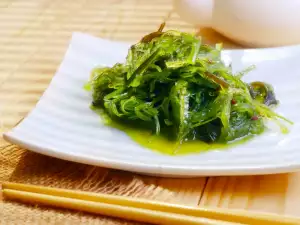Umami is one of the five basic tastes, along with sweetness, sourness, bitterness and saltiness. Translated from Japanese, umami means "pleasant savory taste".
In 1907, Japanese chemistry professor Kikunae Ikeda decided to find out the reason for the wonderful taste of soup made from Kombu (natural organic seaweed) kelp, that his wife made for him. He made 2 discoveries - the broth from the seaweed contained glutamate, and that this newly found substance was the cause for the taste sensation "umami".
The professor attributed this taste to isolated crystals in glutamic acid. Whenever its proteins dissolved, either by boiling, fermentation or ripening, glutamate is the result.
Two years after the discovery, the production of monosodium glutamate (MSG) began. It was quickly widespread and nowadays is one of the most widely used spices. It is found in canned soups, crackers, meat, salad dressing, almost all frozen foods and many others.

The spice sodium glutamate causes the fifth taste sensation in man, known as "umami".
According to culinary experts, some of the more popular foods that contain the taste of umami are anchovies, parmesan, mushrooms, Worcestershire sauce.
Umami has a light, but long-lasting aftertaste, that is difficult to describe. It causes saliva production and a rough sensation on the tongue; it stimulates the palate and throat with a light tickling. By itself, umami has no taste, but increases the intensity of the flavor of foods that it is in contact with.
Its use is limited to a relatively narrow variety of concentrations. The optimum taste of umami also depends on the amount of salt, while at the same time, when in contact with foods with low salt, can provide a satisfactory taste.

Many foods that we consume on a daily basis, are rich in umami. Natural glutamate can be found in meat, fish, mussels, sausages, mushrooms, vegetables (ripe tomatoes, Chinese cabbage, spinach, celery and others) or green tea. It can also be found in fermented foods (cheeses, pastes, soya sauce and others).
Most people's first contact with umami was when they fed on breast milk.
All taste receptors on the tongue can detect the taste of umami. They do not distinguish it though, because it successfully combines with one of the other four tastes.
But besides the receptors, that we learned about in school, specific taste lumps exist for umami. It is believed, that they react to glutamate in the exact same way that "sweet receptors" react to sugar.




















Comments